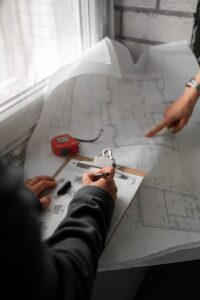Architecture is more than just walls, roofs, or aesthetically pleasing structures. It is the art and science of designing spaces where humans live, work, and interact. The buildings that surround us tell stories about our history, culture, and technological advancements. From ancient monuments to modern skyscrapers, architecture reflects the creativity and ingenuity of civilizations throughout time.
At its core, architecture shapes the way we experience the world. It influences our moods, daily routines, and even social behavior. Whether strolling through a bustling city center or relaxing in a quiet home, the thoughtful design of spaces significantly impacts our quality of life.

Definition of Architecture – More Than Just Buildings
The definition of architecture goes far beyond bricks and mortar. It is the thoughtful organization of space, structure, and aesthetics to serve human needs while inspiring a sense of beauty and purpose. Architecture combines multiple disciplines—engineering, art, history, and sociology—to create environments that are functional, safe, and visually appealing.
- One key aspect of architecture is that it balances form and function. A building might be stunning to look at, but if it fails to meet the practical needs of its users, it cannot truly be considered successful.
Historically, the definition of architecture has evolved with society. Ancient structures like the pyramids of Egypt or the temples of Greece showcase not only technical prowess but also cultural and religious symbolism. Modern architecture, meanwhile, emphasizes sustainability, technology integration, and minimalistic design, reflecting contemporary values and priorities.
Exploring the Dimensions of Architecture
Understanding architecture requires exploring its multiple dimensions. These dimensions include aesthetics, functionality, sustainability, and cultural relevance. Every design decision carries meaning, whether it’s the choice of material, the layout of a space, or the orientation of a building to maximize natural light.
- Architects act as storytellers, using spaces to communicate experiences and emotions that go beyond words.
The definition of architecture also emphasizes human interaction with the environment. Urban planners consider how public spaces encourage community engagement, while interior architects focus on creating interiors that enhance comfort and productivity. In both cases, architecture is about shaping experiences and enhancing lives, not just constructing buildings.
Another important dimension is sustainability. Today, architects are increasingly tasked with creating designs that minimize environmental impact. From using renewable materials to designing energy-efficient buildings, modern architecture is intertwined with ecological responsibility. This progressive approach ensures that the structures we build today will serve future generations.

Conclusion:
In essence, architecture is a dynamic blend of science, art, and human-centered design. The definition of architecture captures its role as a tool for shaping our physical and cultural landscapes. Every structure tells a story, embodies innovation, and impacts the people who interact with it.
Whether walking through a historic cathedral, a bustling modern city, or a cozy neighborhood home, we are constantly experiencing the power of architecture. It is a living art form that evolves with society, yet remains deeply rooted in the human desire for beauty, functionality, and meaning.




